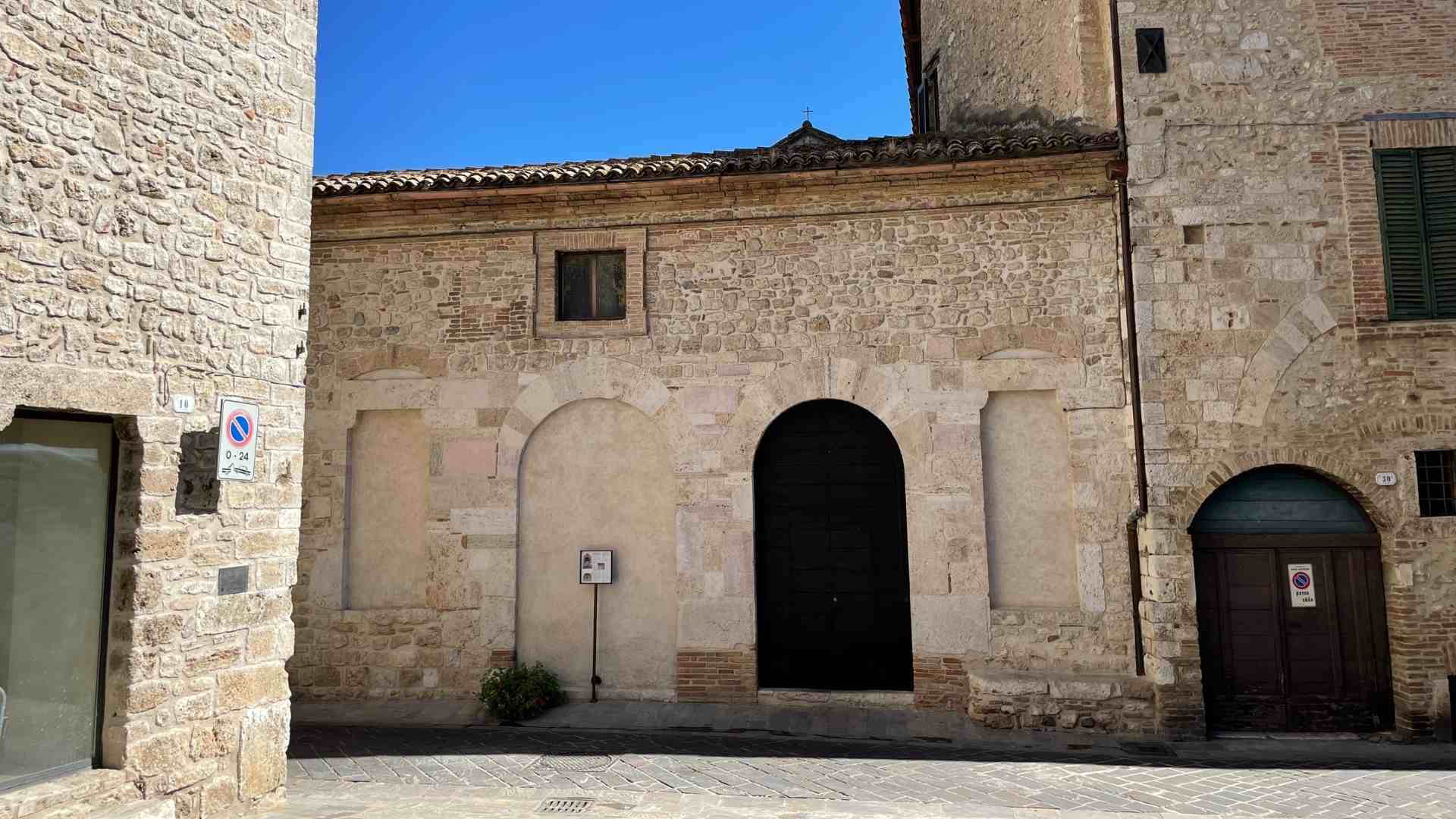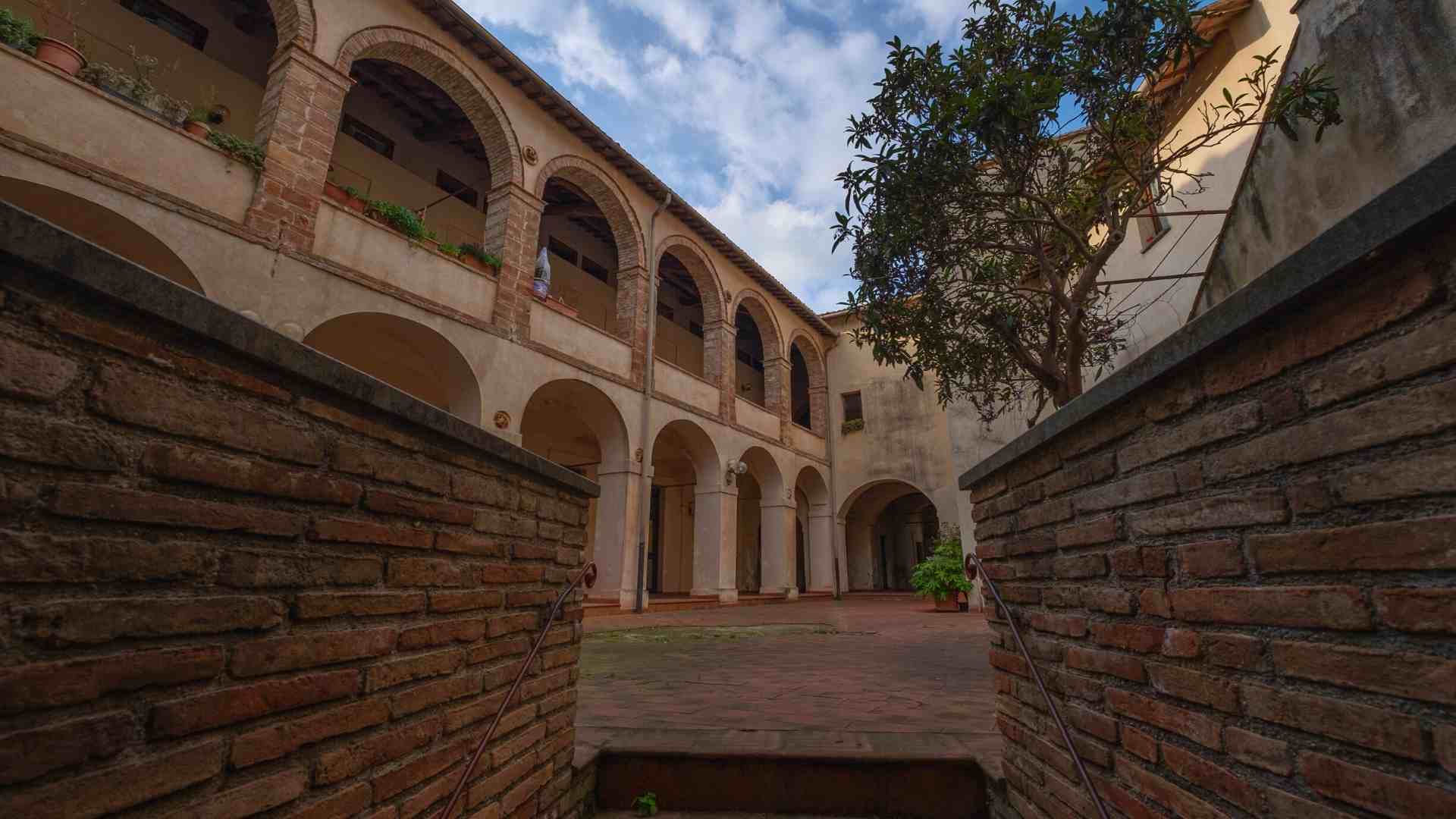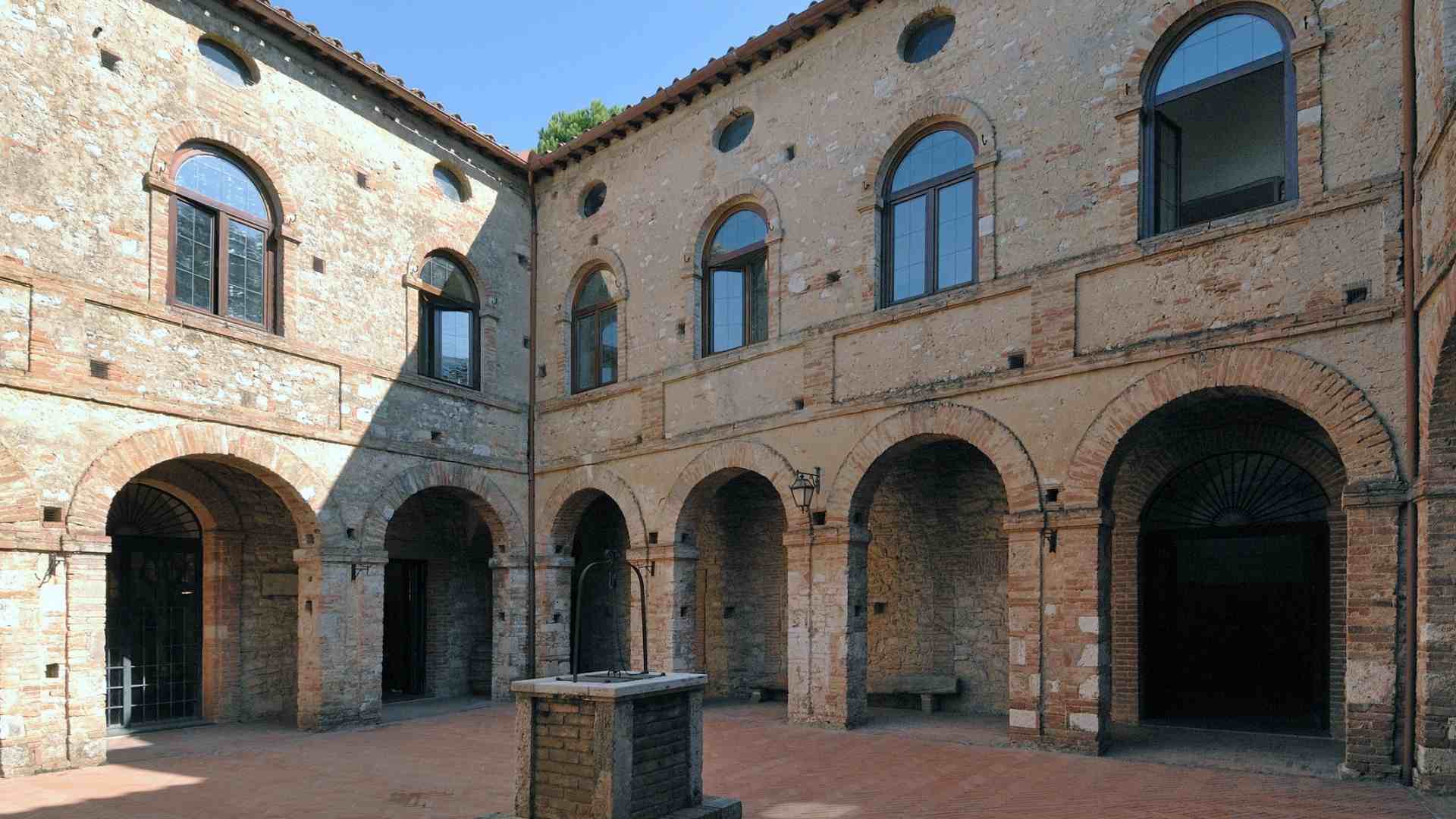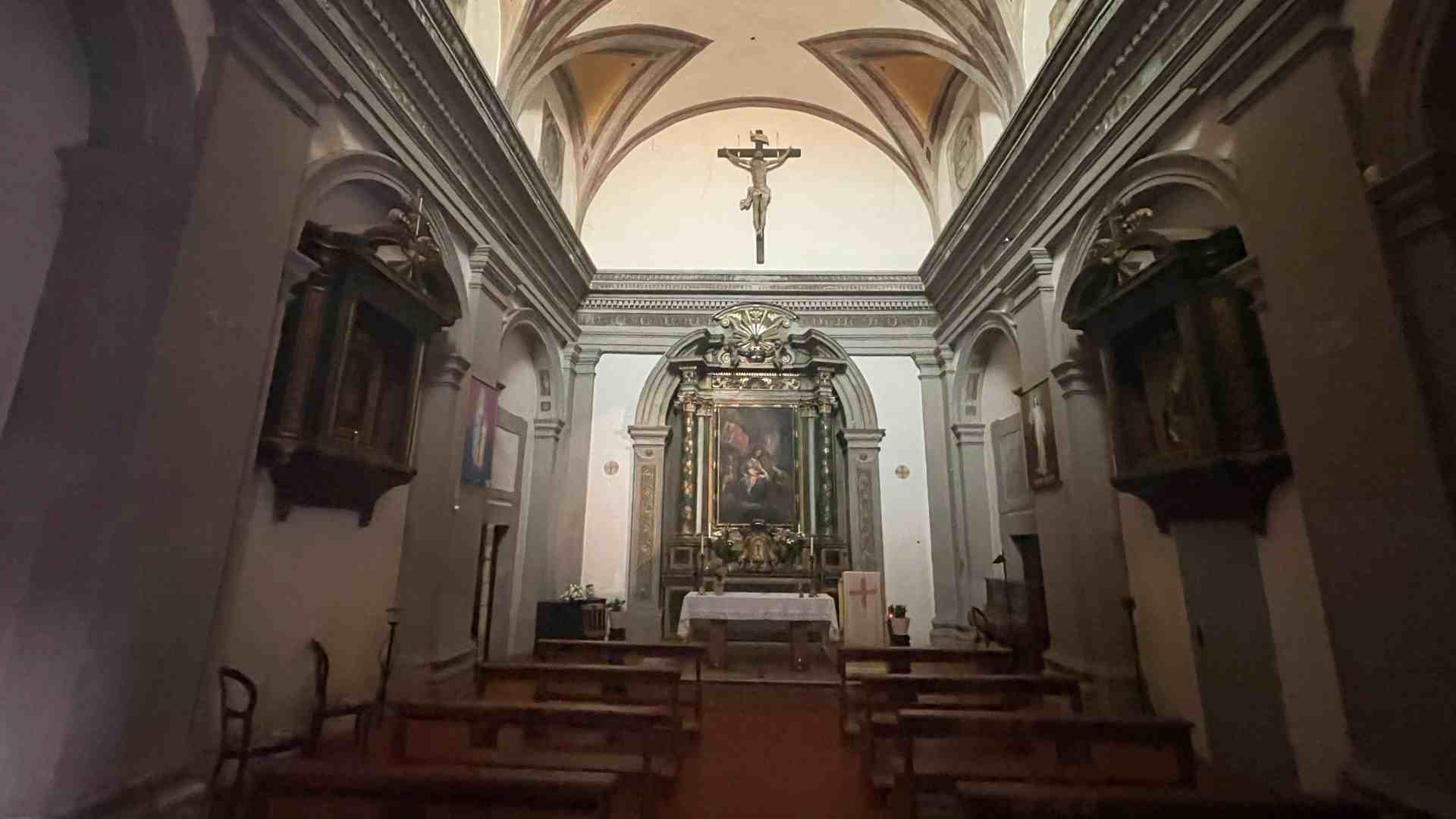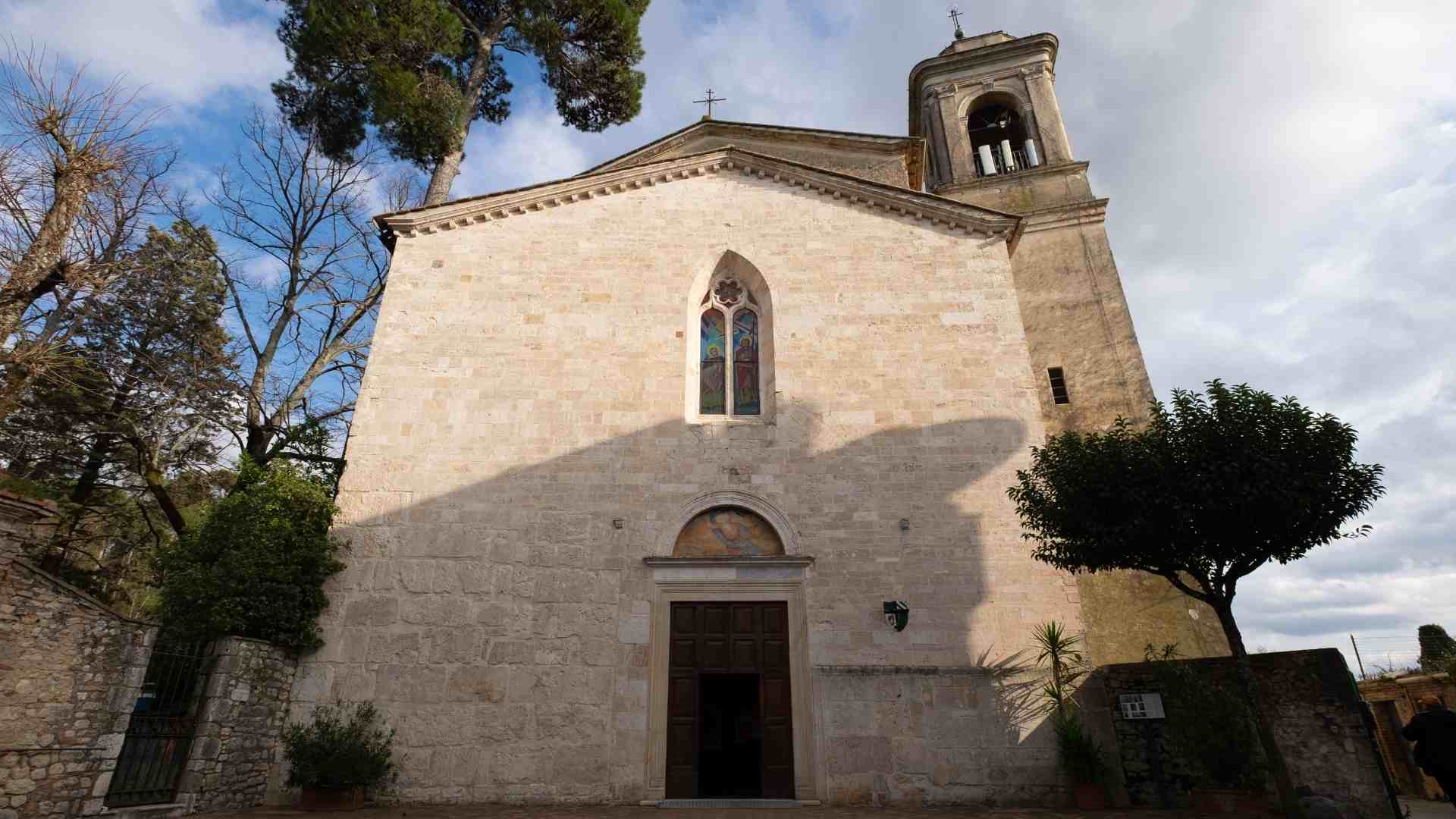Enclosed by two ranks of walls , San Gemini shows all the power in its structure of castle and medieval village that goes up from the Flaminia, passing to the Porta Romana to arrive in Piazza San Francesco, nerve centre of the village and headquarter of the municipality.
Through a path long almost 1 kilometro, the Itinerary inside the walls brings us to all of the places of interest inside the walls of the city of the water.
Porta Romana and the Santacroce Palace
Beside Porta Romana, with the entrance even from Duomo Square, Santacroce Palace, today a beautiful hotel, and built in the year when the duchy of San Gemini passed from the Orsini to the homonymous family, maintains unchanged its charms of nobil residence.
San Francesco Square: the Church, the Municipality and Porta Burgi
Passed the door and going to Roma Street, between shops and activities, you arrive to the beautiful Piazza San Francesco which guests the Municipality Palace and the wonderful homonymous Fountain, the San Francesco Church, the access to Casventino street through Porta Burgi and, through the homonymous street, the rise toward Canova Palace and the Porta del Sale.
Via del Tribunale: the Church of Santa Caterina, the Museum Calori and the Roman Domus
Passed the Porta del Sale, going through the little streets, you arrive at the Church of Santa Caterina and then the former convent of the Poor Clares which today guests the Museum Calori. One Hundred metres far away, the place where was found part of a splendid Roman Domus with mosaics.
The Former Convent of Santa Maria Maddalena, Porta Tuderte and the Church of San Giovanni Battista
At the end of Via del Tribunale, leaving back shoulders the terrace from you can enjoy the beautiful view on the square which guests Palace Vecchio and the Church of San Carlo, you arrive to the Former convent of Santa Maria Maddalena, then to the Church of San Giovanni Battista that insists on Porta Tuderte.
Piazza Palazzo Vecchio: the Palace and the Church of San Carlo
Following back the Casventino street, you arrive again to Palace Vecchio Square, with the Church of San Carlo and the Palazzo Vecchio.
Porta Burgi
Going down toward what was the cardo maximum, you arrive again, passing through Porta Burgi, to SanFrancesco Square.
The Duomo: Church of San Gemine
Before to pass again Porta Romana, turning left, a little climb bring us to the most sacred place of each person of San Gemini: the Duomo dedicate to the Patron of the village, Church of San Gemine, whose edification, for tradition was dated in paleochristian epoque.
San Gemini outside the walls: the Geolab, the Botanical Garden and the Abbey of San Nicolò
Not far away from Porta Romana,to the direction of the ancient Via Flaminia which bring to Narni the Geolab is a permanent exhibition space dedicated to the divulgation of the Science of the Earth. Is worth a visit, just outside the walls, always on the side of Porta Romana, one of the most suggestive place of the Le Terre dei Borghi Verdi: the Abbey of San Nicolò that with its architecture and its gardens bring the visitors in the atmosphere of the first years of the XII century.






